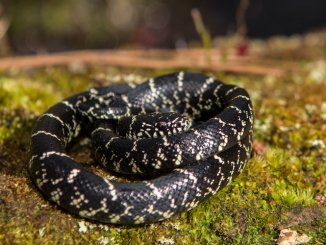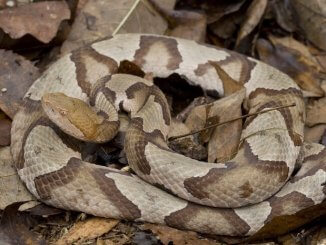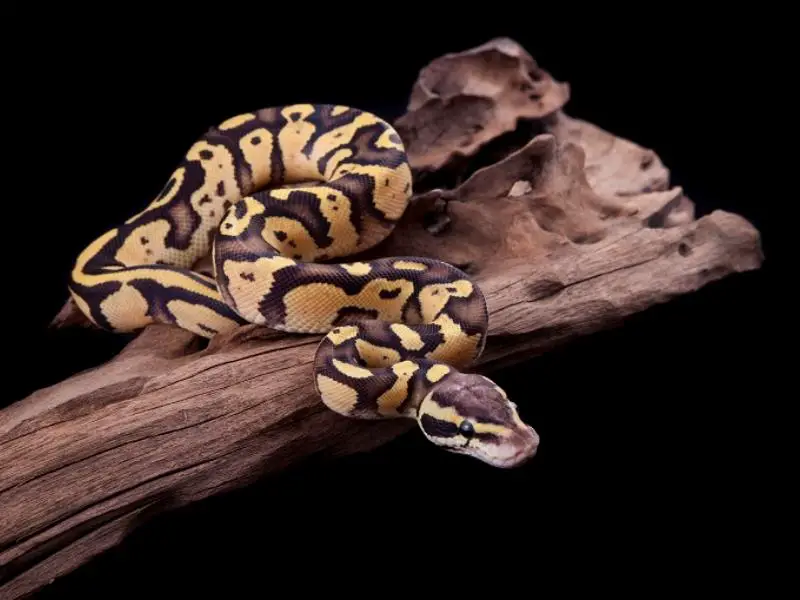
Firefly ball pythons are neon yellow with dark brown patches. Ball pythons are native to West and Central Africa. However, the firefly breed was first introduced in 2007 by breeding fire and pastel ball pythons.
Thanks to their mild temperament, firefly ball pythons are relatively easy to care for, even for first-time snake owners. The snakes also have simple habitat requirements and don’t need as much space as snakes of comparable size.
Firefly Ball Python Overview
| Common name | Firefly ball python |
| Scientific name | Python regius |
| Natural habitat | West and Central Africa, where they live in grasslands and open forests |
| Adult size | 4–6 feet long |
| Average lifespan | 25–30 years |
| Diet | Mice and rats |
| Housing | 30–40 gallon tank, humidity level between 50 and 60%, temperature of above 75°F, with a basking area of 88–96°F |
| Experience level | Beginner |
Origin
The firefly ball python (Python regius) first appeared in 2007, when a fire python and a pastel python were bred.
Ball pythons are native to West and Central Africa, preferring to live in grasses, savannas, and forests. These snakes are considered endangered in the wild because they only mate every two to three years.
Appearance and Behavior
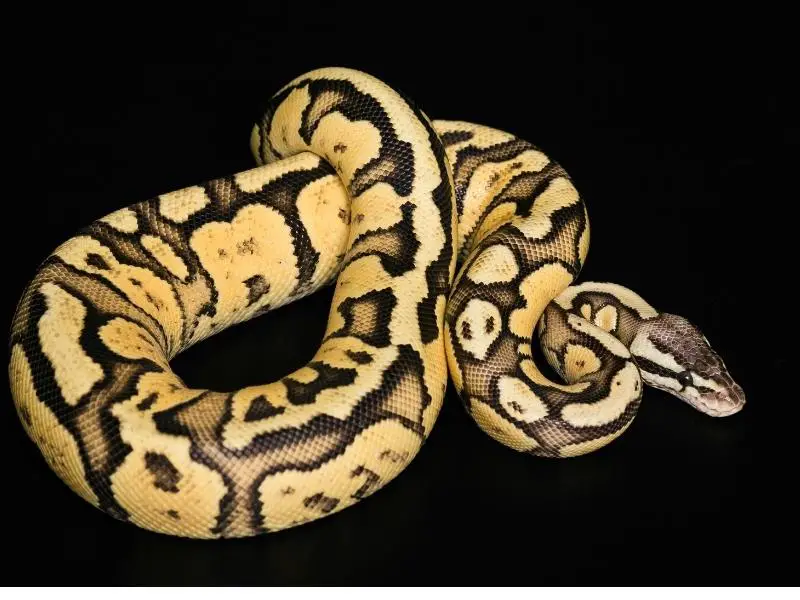
Firefly ball pythons are known for their neon yellow skin with dark brown and black coloring in bands. The pythons’ coloring lightens as they age, so young firefly ball pythons may not initially have the coloring you’d expect.
The male snakes’ organs are stored inside the tail, making it difficult to tell males and females apart. The female pythons can be larger than the males, but size is still not a reliable way to tell the sexes apart.
Size and Lifespan
Firefly ball pythons have a lifespan between 25 and 30 years and grow to between 4 and 6 feet long.
Temperament
Firefly ball pythons are known for having a mild temperament, making them popular among snake owners. These pythons are shy and may spend most of the day hiding in boxes or shady spots in their tank.
These snakes aren’t known to bite their owners but do bite occasionally. Luckily, ball python bites aren’t venomous, so if your python does bite you, treat the affected area with soap, water, and an antiseptic before bandaging it.
Firefly ball pythons are more likely to bite before and after feeding or shedding, so avoid handling them during these times.
Housing Firefly Ball Pythons
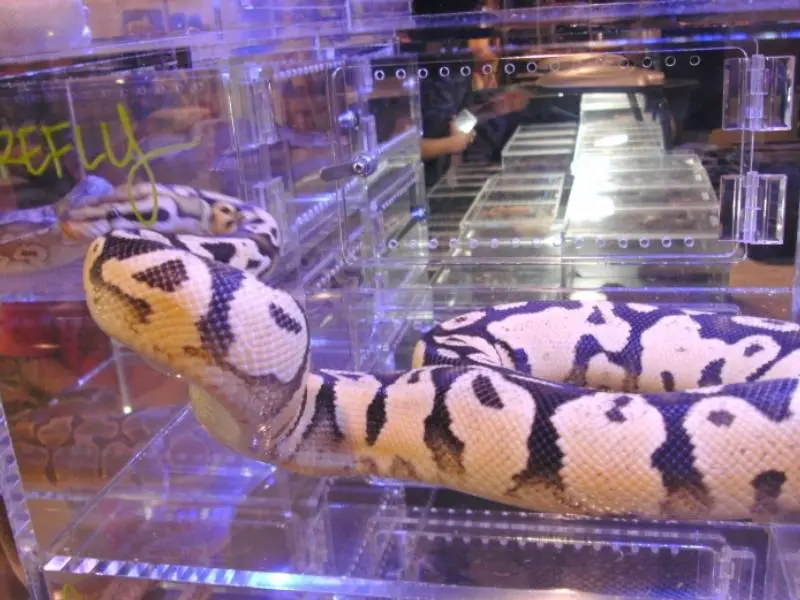
Ball Pythons are native to warm climates in Africa, so they require an environment with high heat and humidity levels.
Keep your firefly ball python in a vivarium with a secure lid.
Enclosure size
Adult firefly ball pythons require a 30–40 gallon tank, while young snakes require a tank of 20–30 liters.
Lighting
Small accounts of UVB light can increase your snake’s activity levels and brighten its coloring, so consider adding one small UVB light to the tank. However, firefly ball pythons don’t require any special lighting.
Temperature and Humidity
Firefly ball pythons are ectothermic, meaning they can’t regulate their own body temperature, so their enclosures need to remain at the optimal temperature to ensure the snakes’ health and survival.
Create a basking area in your python’s tank that’s warmer than the rest of the tank. The temperature of this area should be 85–96°F, and the rest of the tank should be 75–80°F. Create the basking area by placing a specialized reptile heating pad on the bottom of the tank.
Keeping the tank’s temperature at 75°F or above is vital for your ball python’s health.
The humidity in your python’s tank should be between 50–60% to allow the snake to shed its skin properly. Monitor the tank’s humidity using a hygrometer.
Substrate and Decoration
Cypress mulch and orchid bark are ideal substrates for a firefly ball python’s enclosure because these substrates are easy to clean and help control the tank’s humidity.
Never use cedar or pine products in your snake’s tank, as these products can be fatal to reptiles.
Firefly ball pythons enjoy hiding, so they’ll benefit from hiding boxes in their tank. Providing two boxes — one at each end of the tank — will allow the snake to choose to hide in the basking area or the regular area. The python will also likely sleep in the hiding spot.
Cleaning
Lightly clean your firefly ball python’s tank regularly, removing feces and urine as soon as they appear. Once a month, perform a deep clean of your snake’s enclosure.
To deep clean, first remove the snake and all substrate and accessories, and clean the tank with a bleach solution. Rinse the tank thoroughly with water before returning the snake and accessories.
Handle your python gently during the removal process, and avoid cleaning the tank after feeding because the snake is more likely to bite if it’s been fed recently.
Firefly Ball Python Care
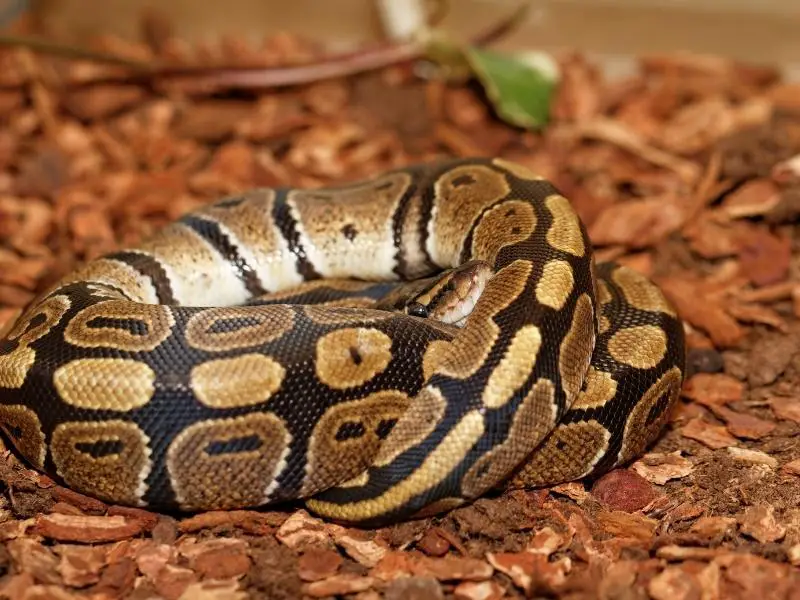
Firefly ball pythons are relatively easy to care for, making them the perfect snake for novice pet owners.
Food and Water
Young firefly ball pythons should be fed one mouse 2–3 times per week. Once the snake is fully grown, feed it a large mouse or rat once a week, or even once every two weeks.
Avoid putting live mice or rats in your snake’s enclosure, and avoid mice or rats that are thicker than the circumference of your snake’s body because prey that’s too thick can cause digestive problems.
Always have fresh water available for your python. For young snakes, the bowl should be no deeper than 1 inch. When your snake is fully grown, a bowl that is a few inches deep is fine.
Handling
Firefly ball pythons are generally quite shy, and although they enjoy being handled, owners should first build up trust. Avoid fast movements when handling your python, as it might interpret swift hand movements as a threat.
Wash your hands before handling the snake to remove scent residue, especially of food.
Don’t handle your snake before or after feeding or shedding, as doing so may interfere with the snake’s digestion and also increases your chance of being bitten.
Firefly ball pythons should be kept away from other pets and shouldn’t be handled by strangers.
Common Health Issues
Firefly ball pythons are prone to respiratory infections, often caused by prolonged exposure to a cold environment. Symptoms of a respiratory infection include gurgling noises when breathing and mucus in the snake’s mouth.
For treatment, contact a veterinarian immediately for antibiotics. To avoid respiratory infections, keep the snake’s enclosure at the correct temperature and humidity levels at all times.
Firefly ball pythons may also contract parasites, including hookworms, tapeworms, and ticks. Ticks can be easily removed with tweezers, but if your snake displays signs of another type of parasite, seek veterinary care.
Breeding
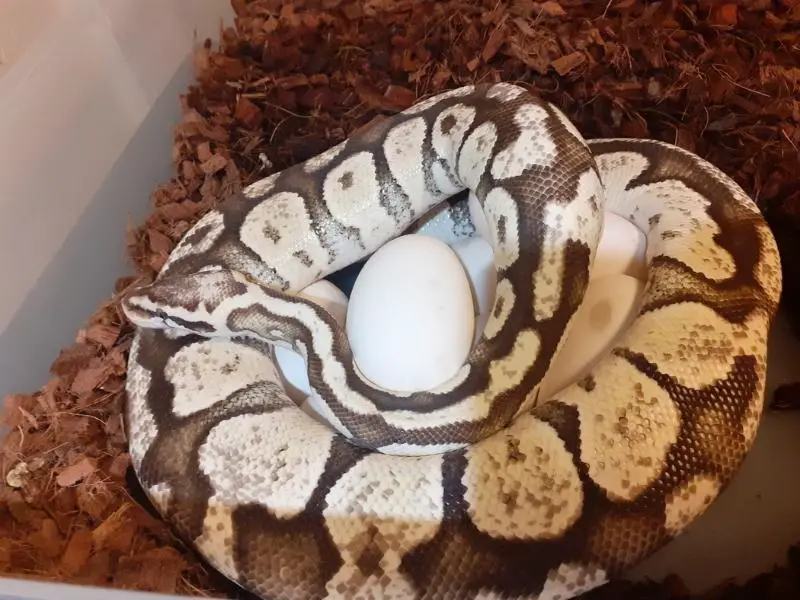
Breeding firefly ball pythons is complicated and difficult, so it’s best left to experienced snake owners or breeders.
Male and female snakes should only be introduced after brumation, and even then, the snakes may not be compatible.
If you put a male and female in an enclosure together and they’re not compatible, they’ll fight. If fighting occurs, separate the two snakes immediately and keep them in separate enclosures.
If the pythons successfully mate, separate them from one another immediately after. The female will then lay up to 12 eggs, which should be moved to their own individual enclosures once they’ve hatched.
Choosing and Buying a Firefly Ball Python
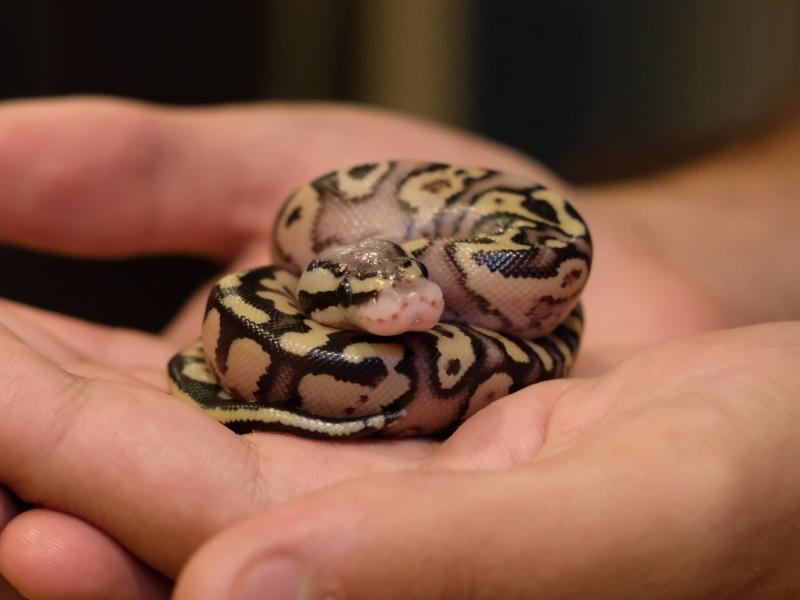
A firefly ball python typically costs $100–$250, and can be purchased from a reputable breeder or reptile pet shop. These pythons can also be purchased online.
Purchase a firefly ball python that’s captive-bred, not wild-caught, because captive-bred snakes are more likely to be healthy and parasite-free.
Before purchasing, confirm with the breeder that a young python has already started eating, to make sure the snake is mature enough to take home.
New snake owners should purchase a young snake rather than a baby because baby pythons are more difficult to care for.
Don’t buy a snake that appears lethargic or has no interest in eating because these symptoms indicate illness.

